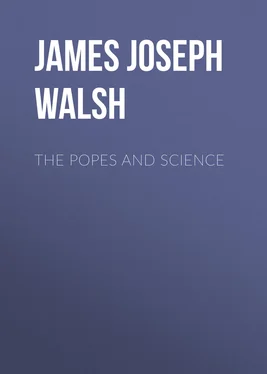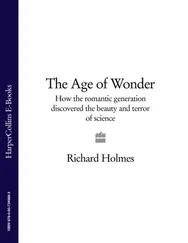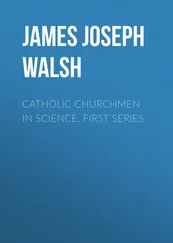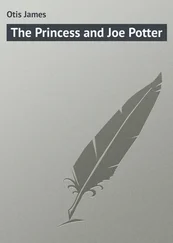James Walsh - The Popes and Science
Здесь есть возможность читать онлайн «James Walsh - The Popes and Science» — ознакомительный отрывок электронной книги совершенно бесплатно, а после прочтения отрывка купить полную версию. В некоторых случаях можно слушать аудио, скачать через торрент в формате fb2 и присутствует краткое содержание. Жанр: foreign_prose, foreign_religion, foreign_antique, на английском языке. Описание произведения, (предисловие) а так же отзывы посетителей доступны на портале библиотеки ЛибКат.
- Название:The Popes and Science
- Автор:
- Жанр:
- Год:неизвестен
- ISBN:нет данных
- Рейтинг книги:4 / 5. Голосов: 1
-
Избранное:Добавить в избранное
- Отзывы:
-
Ваша оценка:
- 80
- 1
- 2
- 3
- 4
- 5
The Popes and Science: краткое содержание, описание и аннотация
Предлагаем к чтению аннотацию, описание, краткое содержание или предисловие (зависит от того, что написал сам автор книги «The Popes and Science»). Если вы не нашли необходимую информацию о книге — напишите в комментариях, мы постараемся отыскать её.
The Popes and Science — читать онлайн ознакомительный отрывок
Ниже представлен текст книги, разбитый по страницам. Система сохранения места последней прочитанной страницы, позволяет с удобством читать онлайн бесплатно книгу «The Popes and Science», без необходимости каждый раз заново искать на чём Вы остановились. Поставьте закладку, и сможете в любой момент перейти на страницу, на которой закончили чтение.
Интервал:
Закладка:
In everything else Lanfranc went farther than his master William, and he did so also in anatomy. Some of the details of his work will be found in our chapter on Surgery in the Middle Ages. He could not have been able to give the detailed instructions that he has for the treatment of every portion of the body only that he knew them by actual contact in the cadaver as well as the patient. His outlook upon scientific medicine and surgery would satisfy even the most exacting of modern experimental scientists. The famous aphorism of his runs as follows: "Every science which depends on operation is greatly strengthened by experience." More than anything else, however, surgery owes to Lanfranc the distinct advantage that he carried into the West as far as Paris, the methods which had come into existence in Italy, and were ever after to prove a precious heritage in the great French University. As Salicet's work was carried on by Lanfranc, at least as well was Lanfranc's work further advanced by his pupil and successor in the chair of surgery, Henri de Mondeville. This subject of surgical development will be treated in the chapter on Surgery in the Middle Ages. Here it is introduced only to emphasize the opportunity there must have been for anatomical study through dissection in the thirteenth century, or these men would not have made the marvelous progress they actually accomplished in this department.
With regard to Mondino, Taddeo's successor at Bologna, enough has been said already in the preceding chapter. About this time, however, very definite evidence begins to accumulate of the frequent practice of dissection. Roth, whose life of Vesalius is a standard work in the history of anatomy, has summed up most of what we know with regard to dissections in the early part of the fourteenth century, in his chapter on Dissection Before Vesalius's Time. Roth's work is well known and is frequently referred to in Dr. White's History of the Warfare of Science with Theology. There can be no question, then, but that in taking what Roth has to say I shall be quoting from a work with regard to which there can be no hint even of partiality. Roth himself was a Swiss, with no leaning toward the Church. There are certain portions of his book, indeed, in which he is inclined not to allow that the Church did as much for education in these times as she actually did. His study of the rise of anatomy can be accepted with absolute assurance, that it is at least not written from the standpoint of one who wants to make the situation with regard to anatomy more favorable than it actually was during the fourteenth century, for the sake of showing any lack of opposition on the part of ecclesiastics.
Some of the material that Roth has made use of has already been referred to in the preceding chapter, but it has seemed proper to repeat it here because this gives a connected account from a definite authority in the history of medicine, and especially of anatomy, with regard to the century immediately following the promulgation of Boniface's bull. Besides, it gives an opportunity for such comments on various features of the history of anatomy, as he details it, as will bring out the significance of his remarks. His account will make it very clear that, far from the Papal bull in question having been universally construed as prohibiting dissections, as Dr. White says it was, it never entered into the minds of medieval anatomists to consider it as having any such signification. The bull was never thought of in that sense at all. It does not refer to anatomy or dissection and it never had any place in the history of anatomy until dragged into it without warrant by Daunou and other nineteenth century writers. Roth says:
"In the pre-Vesalian period the dissection of the human body was practiced, according to the terms of Frederick's law, for the instruction of those about to become physicians and surgeons. The natural place for this school anatomy–for a dissection was called anatomia, or, erroneously, anatomia publica–was at the universities and the medical schools. Apart from teaching institutions, however, public anatomies were held in Strasburg and in Venice. Their purpose was the instruction of the practicing medical personnel of these towns. Dissections which were not made for general instruction were called private anatomies. They were performed for the benefit of a few physicians, or students, or magistrates, or artists. Private anatomies began to have special importance only toward the end of the pre-Vesalian period (this would be about the end of the fifteenth and the first quarter of the sixteenth century). It is a play of chance that the first historical reference to a dissection concerns a private anatomy, one undertaken for the purpose of making a legal autopsy. This was made in Bologna in the year 1302 (two years after the decretal supposed to forbid dissection). A certain Azzelino died with unexpected suddenness, after his physicians had visited him once. A magistrate suspected poison and commissioned two physicians and three surgeons to determine the cause of death. It was found that death resulted from natural causes. (As I have said, it would appear that this was not an unusual procedure, for unless medical autopsies had been done before, it does not seem probable that this method of determining the cause of death would have been so readily taken up.)
"Thirteen years later there is an account of the dissection of two female bodies, in January and March of the year 1315, performed by Mundinus." (We have already seen that the fact that the two female bodies should be especially mentioned, though taken by some historians of medicine to indicate that Mundinus had done but few dissections, will not stand such an interpretation, in the light of the evidence that he had dissected many male bodies at least, as his text-book of anatomy indeed makes very clear. These two dissections of females happened only to have special features that made them noteworthy.) "A few years later (1319) there is a remarkable document which tells the story of body-snatching for dissecting purposes." (This would seem to be sufficient of itself to show that a number of dissections were being done, and, indeed, as I have already said, Rashdall, in his History of the Universities, states that, according to the University statutes teachers were bound to dissect such bodies as students brought to them.) Roth concludes with the words (italics are mine): " These are a few, but weighty testimonies for the zeal with which Bologna pursued anatomy in the fourteenth century. " (I may add that all of these concern the twenty years immediately following Pope Boniface's supposed prohibition.)
Nor was the custom of making dissections any less active during the rest of the half century after the time when, if we are to believe Professor White, the decree of Boniface had been universally interpreted to forbid it. In a note to his history of dissection during this period in Bologna, Roth says: "Without doubt the passage in Guy de Chauliac which tells of having very often (multitoties, many times, is the exact word) seen dissections must be considered as referring to Bologna." This passage runs as follows: "My master, Bertruccius, conducted the dissection very often after the following manner: The dead body having been placed upon a bench, he used to make four lessons on it. First, the nutritional portions were treated, because they are so likely to become putrified. In the second, he demonstrated the spiritual members; in the third, the animate members; in the fourth, the extremities." (Guy de Chauliac was at Bologna studying under Bertruccius just before the middle of the fourteenth century. It is evident beyond all doubt, from what he says, that dissections were quite common. This is during the first fifty years after the decree. I shall show a little later that there are records of dissections during the second half of this century. Roth, however, goes on to tell next of the fifteenth century.)
Читать дальшеИнтервал:
Закладка:
Похожие книги на «The Popes and Science»
Представляем Вашему вниманию похожие книги на «The Popes and Science» списком для выбора. Мы отобрали схожую по названию и смыслу литературу в надежде предоставить читателям больше вариантов отыскать новые, интересные, ещё непрочитанные произведения.
Обсуждение, отзывы о книге «The Popes and Science» и просто собственные мнения читателей. Оставьте ваши комментарии, напишите, что Вы думаете о произведении, его смысле или главных героях. Укажите что конкретно понравилось, а что нет, и почему Вы так считаете.












